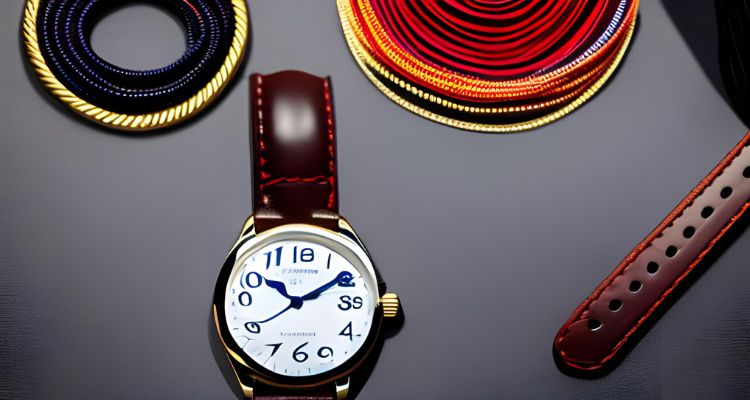Human society has long placed a great priority on clothing as a tool for expressing oneself, social standing, and cultural identity. This was especially true in the 1560s when fashion significantly influenced how people lived their daily lives. Clothing played an important role in class distinction throughout this time, with particular outfits being linked to particular occupations or pastimes.
The Protestant Reformation’s growth, religious strife, and the opening of new international commerce channels all occurred during the turbulent 1560s in Europe. When new materials and fashions started to travel across borders, this development had a significant influence on fashion, creating a broad and dynamic range of garment alternatives.
This Guide to 1560s Clothing gives a thorough understanding of the fashions, components, and social importance of this period’s attire. Readers will learn more about the cultural backdrop of 1560s fashion by examining the clothes worn by men and women as well as the many accessories that finished their costumes. Also, this manual will demonstrate how clothes reflected and responded to the social and political developments of the time by exploring how fashion altered throughout the decade.
I. Clothing for Men
Men’s attire during the 1560s was created to highlight the body’s natural contours and convey a sense of confidence and power. The standard ensemble included a doublet, breeches, and hose.
The doublet was a close-fitting, waist-length garment that might be made of velvet, silk, or linen, among other materials. It frequently had a high collar with buttons or laces that allowed it to be worn standing up or down. The doublet’s sleeves were either completely or partially cut off, revealing the shirt below.

Another vital item of men’s apparel during this time was a pair of breeches. These were snug-fitting trousers that often featured the same fabrics as the doublet and terminated just below the knee. Often, a drawstring or buttons were used to secure the waistline.
The hose was worn over the breeches to complete the costume. They reached from the waist to the feet and were made of wool or silk. They might be looser or more fitted and were frequently embellished with designs or needlework.
Men also wore a variety of accessories, such as hats, shoes, and jewelry, in addition to these fundamental clothing. Hats were a common accessory, and the fashions changed based on the situation and social standing. Shoes might be plain or embellished with elaborate patterns and were often made of leather. Eventually, the only jewelry worn by males was usually rung, which was frequently crafted from gold or silver and embellished with priceless stones.
In general, men’s attire in the 1560s was intended to highlight the wearer’s social standing and power. Well-selected materials, hues, and fashions mirror the newest trends and distinguish men.
II. Clothing for Women
Women’s attire in the 1560s was made to emphasize the female body’s natural contours while still conveying modesty and decorum. The traditional ensemble included a dress, petticoat, and bodice.
A woman’s gown, which was composed of a variety of fabrics including silk, wool, and linen, was the most noticeable component of her attire. It usually had long sleeves that flared at the wrists and flowed freely from the shoulders. The dress’s lace or embroidery may be embellished, and its neckline may be high or low.

Women wore a petticoat underneath their gowns, which gave them more fullness and contributed to a more angular profile. Petticoats might be embellished with lace or embroidery and were frequently created from light fabrics like linen.
The bodice, which was worn over the gown, was a crucial component of the ensemble. It was created to give the torso a flat, thin form out of a hard material like whalebone or wood. The bodice’s front may be fastened with laces or buttons and decorated with lace or embroidery.
Women wore a variety of accessories in addition to these fundamental outfits, including hats, shoes, and jewelry. Ribbons, feathers, and diamonds were widely used as elaborate hat decorations. Shoes were frequently made of leather and might be simple or embroidered. Not to mention, ladies typically wore more intricate jewelry than males, such as bracelets, rings, earrings, necklaces, and rings made of gold or silver that included costly stones.
Women’s attire from the 1560s was often created to emphasize the body’s natural proportions while still exuding modesty and decorum. Colors, materials, and styles were chosen with care to reflect the newest trends and set females apart from one another.
III. Accessories
In the 1560s, accessories were crucial to finishing both men’s and women’s attire. Accessories were used to display social rank and personal flair in addition to their practical functions, such as keeping the wearer warm or shielding them from the sun.

The hat was among the most significant clothing items for both men and women. From the flat caps worn by working-class men to the ornately decorated headdresses worn by noblewomen, hats came in a variety of shapes and styles. Men’s hats might be plain or embellished with feathers or ribbons and were frequently made of wool or felt. Women’s hats tended to be more ornate, with detailed lacework, gems, and feathers.
The shoe was yet another crucial piece of clothing for both men and women. Typically constructed of leather, shoes might be plain or embellished with embroidery or gemstones. Women’s shoes frequently have higher heels than men’s shoes, emphasizing the foot’s form and contributing to a more elegant walk.
Jewelry was an essential part of both men’s and women’s clothing. Rings were common among both sexes, with men’s rings frequently having straightforward patterns and women’s rings having expensive stones and elaborate designs. Necklaces and bracelets were also popular, with women’s jewelry usually being more elaborate and intricate than men’s.
Finally, other accessories such as belts, gloves, and handkerchiefs were used to complete outfits and add a personal touch. Belts were often made from leather and were used to cinch in the waist, while gloves were made from a variety of materials and were often decorated with embroidery or lace. Handkerchiefs were also an essential accessory and were used for a variety of purposes, from wiping sweat from the brow to dabbing at tears.
Overall, accessories were a crucial element of 1560s fashion, serving functional and decorative purposes. They were carefully chosen to reflect the wearer’s social status and personal style and were often decorated with intricate patterns, embroidery, and jewels to create a sense of luxury and opulence.
IV. Social Significance of Clothing
During the 1560s, clothing played an important role in signaling social status and class distinctions. Rich people wore clothing that was crafted from pricey fabrics like silk and velvet and embellished with elaborate needlework, lace, and gems. These people included nobles and members of the aristocracy. In contrast, working-class individuals wore simpler clothing made from cheaper materials such as wool and linen.
Clothing also played an important role in signaling gender and marital status. Men and women were supposed to follow rigid gender norms when it came to fashion, with married ladies required to dress more modestly than single women. In contrast to women, who were supposed to dress to highlight their femininity and curves, males were expected to dress in utilitarian, functional attire.
Clothing also played a role in signaling religious affiliation. England was going through a period of religious unrest in the 1560s as the Protestant Reformation contested the Catholic Church’s dominance. As a result, clothing became a way for individuals to signal their religious beliefs. Protestants, for example, often wore simple, plain clothing as a way of rejecting the elaborate, ornate clothing associated with the Catholic Church.
Last but not least, clothes also contributed to the expression of regional and national identity. The distinctive dress styles of the many English areas served as a means of expressing one’s patriotism to that region or England as a whole. This was crucial during periods of political upheavals, such as those under Queen Elizabeth I, when wearing certain clothes served as a statement of allegiance to the monarchy.
In general, the 1560s saw the significant importance of dress in communicating social position, gender, religious affiliation, and regional identity. Clothes were carefully picked to represent one’s social position and personal personality. To provide a feeling of richness and extravagance, clothing was frequently embellished with complex designs, embroidery, and gems.
V. A Guide to 1560s Clothing Conclusion
A Guide to 1560s Clothing saw a tremendous degree of variation and complexity in fashion, with clothes being a key indicator of social class, gender, religious affiliation, and geographic identification. While women’s attire was more extravagant and decorative, emphasizing the feminine form and femininity, men’s clothing was distinguished by basic, functional designs. Hats, shoes, jewelry, and handkerchiefs were essential finishing touches that gave ensembles a personal touch.
Despite the significance of clothes in expressing a social position and individual individuality, the 1560s saw a variety of external influences on fashion, such as changes in politics, religion, and technology. Because of this, fashion in this era was continuously altering and growing, reflecting how complicated and dynamic Elizabethan society was.
As evidence of the continuing power of fashion and its capacity to reflect and change cultural and social conventions, the dress of the 1560s still serves as inspiration for designers and fashion aficionados today.
